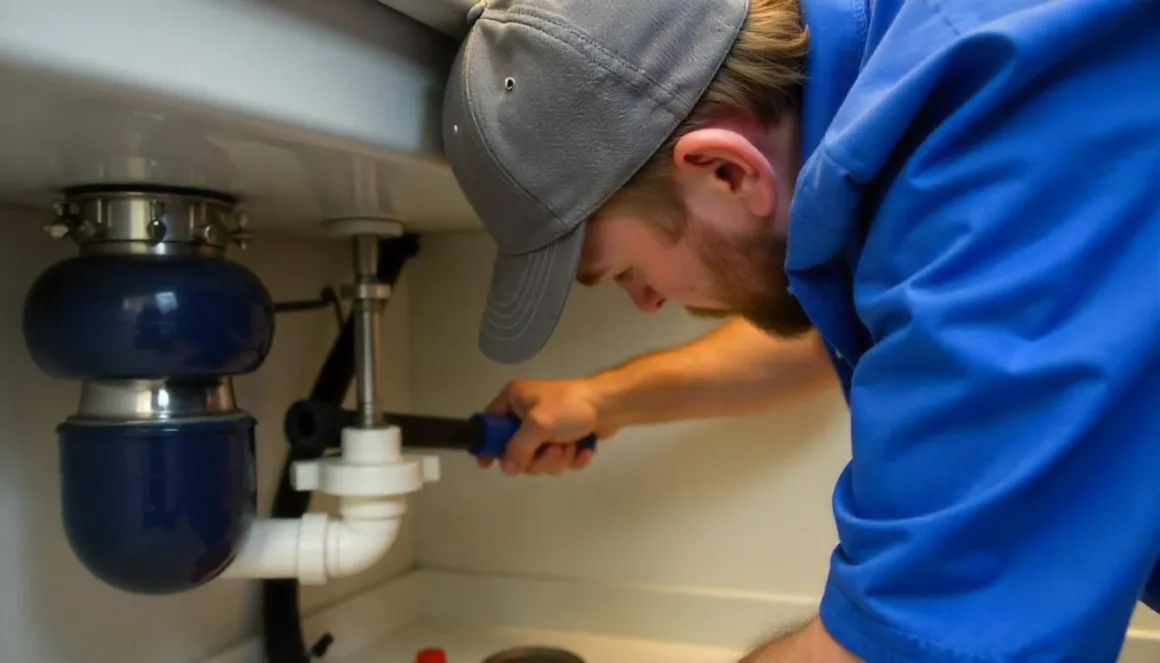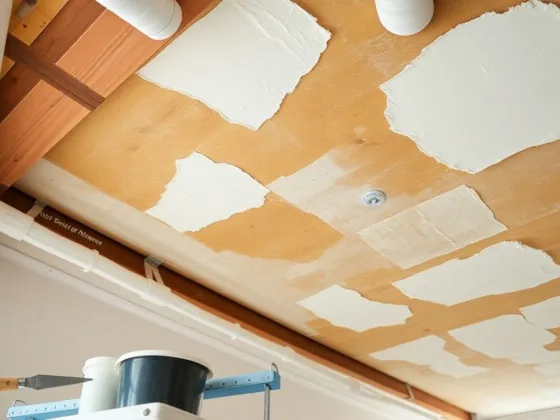Why Do Garbage Disposals Lose Efficiency Over Time?
Over time, the internal grinding components wear down, food residue builds up, and the motor strains—like a blender struggling with dull blades and a clogged base. Regular cleaning and proper use can slow this decline, but neglect leads to sluggish performance.
In some cases, a persistent clog, leaks under the sink, or a disposal that refuses to turn on could indicate a bigger plumbing issue rather than just a dirty unit. If resetting or manually freeing the impellers doesn’t work, or if you notice water backing up into other drains, it’s time to call a plumber. They can inspect the pipes, clear deep clogs, and determine if the disposal itself needs replacement.
It’s not just about dull blades. Micro-residue buildup on the grind ring reduces cutting power, while tiny motor inefficiencies stack up. If you’re running it with lukewarm water, grease isn’t breaking down properly, accelerating sludge accumulation and clogs.
What Causes Bad Smells and Clogs in Garbage Disposals?
The main culprits are leftover food sludge, grease coating the walls, and debris trapped in the splash guard—creating the perfect breeding ground for foul odors. Starchy foods like pasta, rice, and potato peels turn into glue-like substances, leading to blockages.
Beyond food scraps, biofilm plays a major role. That slimy coating inside the disposal traps bacteria, producing a swampy stench. Sometimes, the real issue isn’t even the disposal—it’s a gunked-up P-trap in your sink, making it seem like the disposal is the problem when it’s really your pipes.
What’s the “Weird Trick” That Restores a Garbage Disposals’ Performance?
A deep clean using baking soda, vinegar, and boiling water melts away grime, while grinding ice cubes and rock salt scrubs the grinding chamber—mimicking a power wash inside your disposal.
For an even better clean, freeze vinegar into ice cubes with rock salt and grind them up. The cold helps contract metal parts, loosening stuck debris, while the vinegar dissolves buildup and the salt acts as a natural abrasive. Bonus: It deodorizes, too.
How Do Ice Cubes, Salt, or Citrus Peels Help Clean the Disposal?
Ice knocks off buildup, salt scrubs the metal, and citrus peels fight bacteria while leaving a fresh scent. Together, they give your disposal a quick tune-up in seconds.
The real magic happens with temperature changes. Ice causes the metal to contract slightly, helping to break up hidden grime. Salt works like a scouring pad, and citrus peels release natural oils that coat the disposal, slowing down bacterial growth.
What Household Items Can Damage a Garbage Disposal?
Certain items can cause problems for your garbage disposal by jamming the motor, dulling the blades, or creating blockages in your pipes.
Here are some common household items that can damage a garbage disposal:
- Bones and eggshells: These hard items can cause jams and wear down components of the disposal.
- Fibrous vegetables: Vegetables like celery, corn husks, and artichokes have stringy fibers that can wrap around the impellers and cause issues.
- Coffee grounds and grease: While they may seem harmless, coffee grounds turn into sludge and grease solidifies, both of which can lead to clogs.
- Flour and paint: These substances are particularly dangerous as they mix with water to form a hardened paste that can block the system.
- Pumpkin guts: The fibrous strands from pumpkin guts can tangle around the impellers and create jams that hinder the disposal’s performance.
How Can You Safely Clean and Maintain a Garbage Disposal?
- Weekly: Run ice cubes and coarse salt through the unit to scrub away grime and keep the impellers working efficiently.
- Monthly: Use a disposal brush or an old toothbrush to scrub under the splash guard and remove hidden buildup.
- Deep clean: Let citrus peels and baking soda sit overnight before rinsing in the morning to break down residue.
What Maintenance Routine Keeps a Garbage Disposal Running Like New?
Forget random DIY tricks—stick to the 3-Routine System:
- Daily: Run hot water for 10 seconds before and after use.
- Weekly: Ice and salt scrub to clear gunk.
- Monthly: Deep clean with dish soap foam—fill the disposal with suds, let it sit, then flush with hot water.
RELATED: Tip to Maintain Garbage Disposal for a Healthy & Clean Kitchen
What Should You Do If Your Garbage Disposal Hums but Doesn’t Spin?
- Hit the reset button underneath the unit.
- If it still hums, use an Allen wrench in the bottom slot to manually turn the impellers and free a jam.
- If there’s still no movement, power off the unit and check for obstructions—tiny pieces of glass or bone might be lodged in the grind ring.
When Is It Time to Replace Your Garbage Disposal?
If your disposal leaks, frequently trips the breaker, or jams constantly, it might be time for a replacement. Older units (8+ years) with weak grinding power or a struggling motor are often better replaced than repeatedly repaired.
Signs It’s Time to Replace Your Garbage Disposal
- Frequent Resets: If you find yourself resetting the disposal more than once a month, it’s a sign that it’s wearing out.
- Unusual Noises: A healthy disposal has a low growl sound. If you start hearing whirring, rattling, or higher-pitched noises, it could indicate that the motor is failing.
Using these simple maintenance tips and the unusual cleaning method can keep your garbage disposal running smoothly and smelling fresh for years.
FAQs
The trick involves using ice cubes and salt! Simply toss a few ice cubes and a handful of salt into the disposal and turn it on. The ice helps to clean the blades, while the salt acts as an abrasive to remove any built-up grime.
It’s a good idea to do this trick once a month to keep your garbage disposal running smoothly and to prevent any unpleasant odors from building up.
Yes! You can use baking soda instead of salt for an extra cleaning boost. Just sprinkle some baking soda in along with the ice cubes for a deeper clean.
No, this trick is safe for your garbage disposal! The ice and salt are gentle yet effective, ensuring that your disposal stays in great shape.
Besides the ice and salt trick, regularly running cold water while using the disposal, avoiding fibrous or starchy foods, and occasionally grinding citrus peels can help maintain its performance.
Avoid putting items like grease, fibrous vegetables (like celery), coffee grounds, eggshells, and starchy foods (like pasta or rice) down the disposal, as they can cause clogs or damage.










